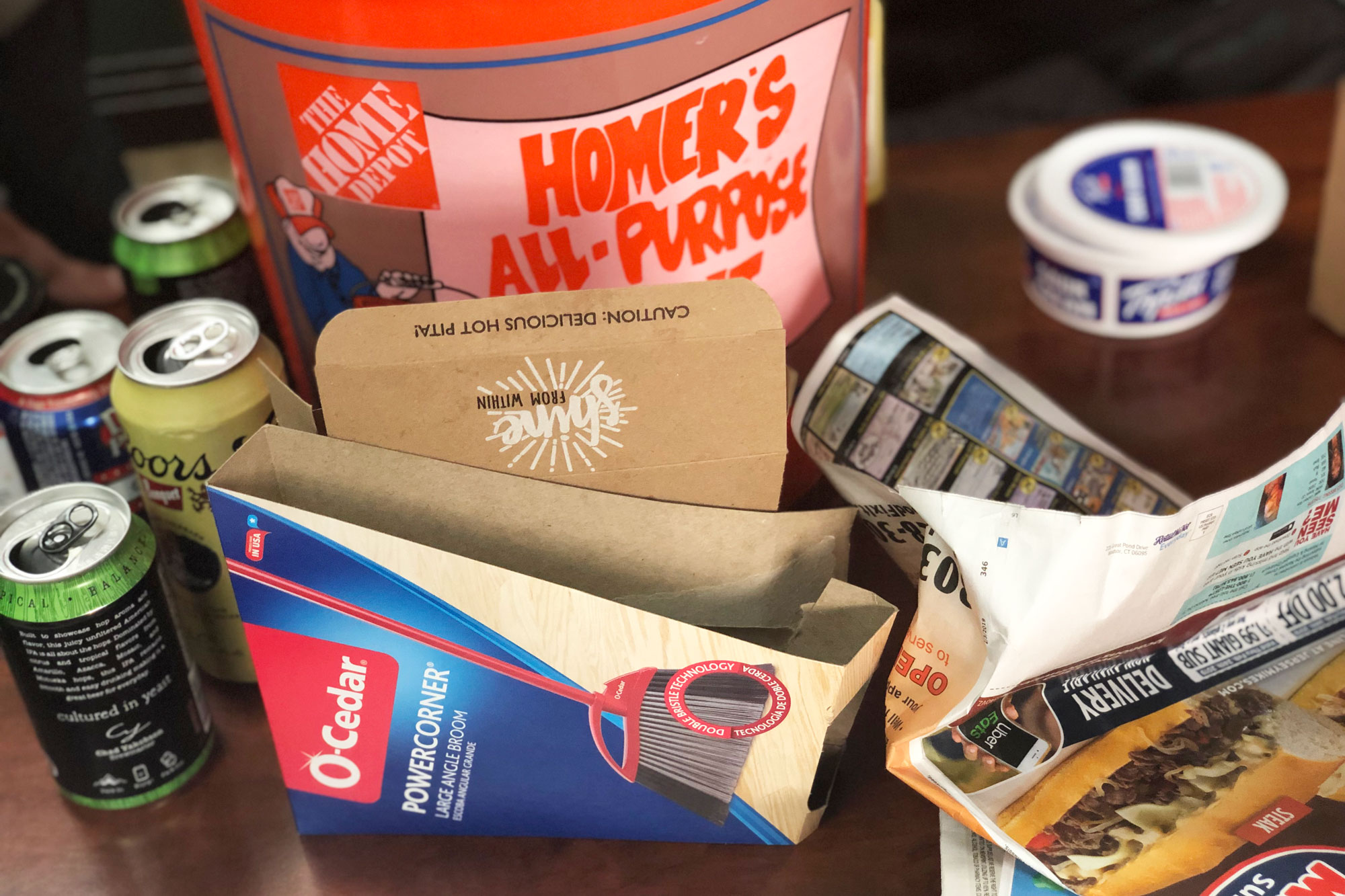

It’s one of the most agonizing questions: trash, or recycle?
Recycling concerns are a common question posed to Colorado Wonders. Whether it’s what can go in the blue and green bins, where all that cardboard and glass goes, or if anything actually ends up getting recycled.
Brent Hildebrand, Vice President of Recycling at Alpine Waste & Recycling in north Denver, has the answers. Alpine is the second largest recycler in the state and accepts materials from the Denver metro area as well as Grand Junction, where recyclables get collected by local companies and shipped to Alpine for processing.

What Can You Recycle?
It’s important to remember that every recycler is different. What’s acceptable at one facility might not be at another. This map from Colorado’s Department of Public Health and Environment can help locate your local recycler and find out what they accept.
Most processors will accept cardboard, aluminum or tin cans, glass, paper, and certain grades of plastic.
Alpine accepts Styrofoam and coffee cups, but it’s currently the only recycler in the state to do so.
If the lids and containers of a jar are made of different materials, they can both go into your bin, but must be separated.
“If you have glass going with metal to the end user, that’s not good for their process,” Hildebrand said. “Or if you have metal going with the glass to the glass manufacturer, that’s very bad for their process.”
Not all materials need to be separated. Plastic windows on paper envelopes, for example, can stay on.
| Things We Shouldn't Be Tossing In Our Purple Bins... But Probably Are* |
|---|
|
| *Recyclables vary by collector statewide. Be sure to check with your local operator for acceptable items. |

Do Recyclables Need To Be Sparkling Clean?
If your recyclables come in contact with food or grease, it depends how clean they need to be.
Give everything a quick rinse, but it doesn’t have to be pristine. The recycling world does not expect you to get every speck of peanut butter out of your jars.
What’s important is to wash out any heavy food or liquid. The extra weight makes it almost impossible for the machinery to sort that item out from the rest.
Things get more complicated when it comes to grease on cardboard, like pizza boxes. If the cardboard has a small amount of grease on it, it’s probably safe to recycle. But if there’s dark, splotchy grease spots covering the box, don’t put it in your bin. Unless you have a compost service that accepts cardboard, the box is destined for the landfill.

How Does The Process Work?
Colorado largely runs on a single-stream system for residential recycling. Single stream means you put everything into one bin, and then the waste is sorted.
Once your recycling gets collected, it’s delivered to a facility like Alpine’s in a big heap. The processors then sort those materials into papers, plastics, cardboards, glasses, etc. The categories of materials will get packaged and sent to buyers who turn them into new things.
The sorting process at Alpine looks like a maze of conveyor belts, catwalks, and even robots. One of Alpine’s robots, named Clark, sorts specific kinds of plastic, and he’s the first of his kind in North America. He sorts the recyclables with artificial intelligence and eyes that are very similar to human ones.
But it’s not all automated, lots of sorting still happens by hand.
“The equipment does a great job, but it’s not perfect,” Hildebrand said. “On top of that, the quality restrictions that I have with the end user, I have to have quite a bit of manual labor to help the machinery out.”

So, Does It Actually Get Recycled?
Up until January of 2018, China was the leading re-manufacturer of America’s recyclable material but now it enforces strict contamination limits making it harder for processors to send recyclables to China.
But many other countries take recycling from the U.S., including Vietnam, South Korea and India. Alpine prefers to sell materials domestically when it can.
Cardboard is often remanufactured in China into a new box, meaning it could one day end up back at your doorstep all over again. The same goes for coffee cups, which are often made into new cups.
Some materials get new lives entirely. Water bottles could make carpeting or even t-shirts. There’s a company coming to Colorado that turns waste into building material.
Very little recyclable material ends up in a landfill, Hildebrand said. Out of all the material that comes into the Alpine facility, 10 percent gets landfilled, and that 10 percent is mostly made up of things that shouldn’t be recycled in the first place.
“We get a lot of metal that should not be in the recycling,” Hildebrand said. “We fill a big 30-yard construction dumpster everyday full of metals that should not be in the single steam.”
No-no metals include car bumpers, pots and pans, and barbeque grills.
(The most surprising non-recyclable thing to come off the conveyor built at Alpine? A live bearded dragon.)
The system isn’t perfect, and some things that can and should be recycled may get missed. But Hildebrand said they try very hard to make sure the bulk of the stream is recycled and sent off to have a second, third or even fourth life.
“It gets recycled for real,” Hildebrand said.









